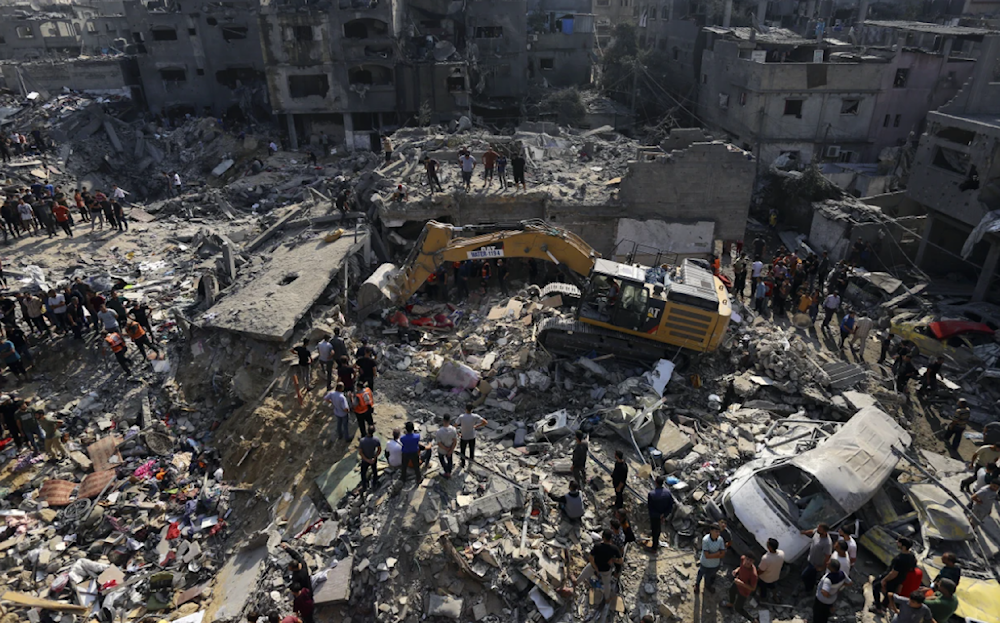IOF fired 100,000+ artillery shells on Gaza since October 7
Israeli occupation forces admit to firing more than 100,000 artillery shells on the Gaza Strip and 10,000 others on Lebanon and Syria.
-

Palestinians look for survivors under the rubble of destroyed buildings following Israeli airstrikes in Jabalia refugee camp in Gaza on November 1, 2023. (AP)
Israeli occupation forces (IOF) announced that more than 100,000 artillery shells were fired on the Gaza Strip, with nearly 10,000 others fired on Lebanon and Syria since Operation Al-Aqsa Flood began on October 7.
The occupation also divulged via statements that this number greatly exceeds that of artillery shells fired during the aggression on Gaza in 2014, during which 30,000 shells were fired on Gaza.
The IOF have killed over 15,000 Palestinians in Gaza since October 7, the majority of whom are women and children, and according to Hamas political bureau member Osama Hamdan, "Israel" has dropped more than 35,000 tonnes of explosives on the Gaza Strip since October 7.
"Over 35,000 tonnes of explosives have already been dropped on Gaza, which means more than 1,000 tonnes are being dropped on Gaza every day," Hamdan told a press conference.
As of November 2, the Euro-Med Human Rights Monitor revealed that the quantity of explosives launched on Gaza exceeds 25,000 tons at a rate of 70 tons per square kilometer, noting that this amount of explosives is equivalent to twice the power of the US nuclear bomb dropped on Hiroshima.
The Geneva-based organization said the Israeli occupation army claimed that its warplanes targeted more than 12,000 "targets" in the Gaza Strip, whereby the share of each individual in the Strip exceeds 10 kilograms of explosives.
The organization also pointed out that "Israel" is deliberately using a mixture of explosives known as RDX, with a strength times 1.34 of TNT.
As per Euro-Med Human Rights Monitor, this means that the destructive force of the explosives dropped on Gaza exceeds what was dropped on Hiroshima, noting that the area of the Japanese city is 900 km2, while the area of Gaza does not exceed 360 km2.
It is noteworthy that the IOF's aircraft also launched hundreds of raids on the strip, using internationally banned phosphorus bombs, targeting hospitals, residential buildings, and civilian and service facilities, particularly disrupting health, water, and sanitation systems.
The "Bank of Israel" released a report on Monday announcing that the estimated cost of the war on Gaza following Operation Al-Aqsa Flood on October 7 has topped 198 billion shekels ($53 billion).

 3 Min Read
3 Min Read










